A week in the Flinders Rain-ges
- June 2, 2023
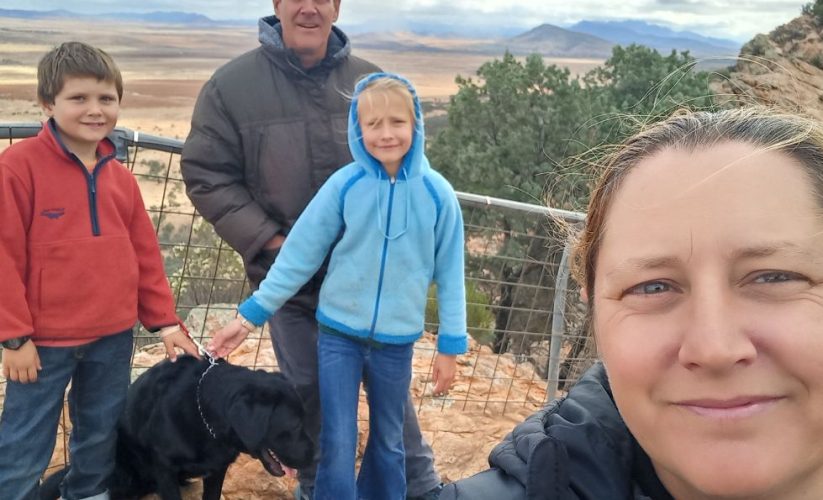
We hadn’t realised what a thriving metropolis the town of Peterborough was until we drove out of it and headed north, towards the Flinders Ranges. But you’ve been to the Flinders Ranges before I hear you say! Nope, that was the southern Flinders Ranges – we were heading to the much larger, more remote central Flinders Ranges, home of the Flinders Ranges National Park (and not to be confused with the smaller northern Flinders Ranges). Needless to say, all three of the Flinders Ranges cover an absolutely massive area so we’ve had to do it in bits.
Many of the stations in the area offer camping, fancier accommodation and tours as a way of supplementing their income so we had a plethora of choice when it came to where to stay. Sometimes that makes it harder as there are too many options, so we just picked one and decided that was the one. Then we spoke to a very helpful fellow traveller in Peterborough who had just been in the Flinders Ranges. His suggestions seemed sound so we threw our plans out the window and just did all the things he said.
His suggestion was to stay on Alpana Station, a 60,000 acre working sheep station towards the northern end (of the central bit – see it gets a bit confusing), near the town of Blinman, the highest town in South Australia (it’s not that high – 616m above sea level). Alpana had a few different options – camping near the homestead with showers, toilets, water and even power if you want it, or camping 30 minutes down a dirt track, through a locked gate and next to a dry creek bed, with no facilities save a drop toilet.
Of course, we chose the latter, which turned out to be an excellent choice. There are only four sites in this little locked area, all 300 metres apart. We were on our own except for the last couple of nights, although I hadn’t actually realised we had neighbours until Jim drove out and spotted them.
We did share the area though with dozens and dozens of wild goats who have this distinctive smell about them. It’s hard to describe and smells like nothing else I know of, but safe to say, you generally smell them before you see them. They wandered through once or twice a day but otherwise left us to it. Plenty of little kangaroos bouncing around, and an emu that strolled through a couple of times as well.
Luckily the dry creek wasn’t entirely dry so we had access to creek water for showers and dishes. That meant we could stretch our drinking and cooking water quite far. Water is a precious commodity here (although we did find a rainwater tank to top up later in the week).
Speaking of water…when we turned up we were pretty pleased. The place was so dry and dusty it wasn’t possible that we could have rain. Looked like it hadn’t rained for a millennium or two. But sure enough, as is our luck, a couple of nights in we had the mother of all storms lashing the tent, creating a little river under it and generally keeping us on our toes for hours. That rainfall alone was more than double their usual May average. Then it rained for three more days…giving us four days of rain out of seven altogether, and ensuring that our record of no more than four fine days in a row for the entire trip still stands. Unbelievable!
Of course, all that cloud cover led to the usual issues around gathering power for solar to keep the business afloat (and the food in the fridge cold). We managed to just muddle through but it was a close-run thing a couple of times.
We did get out and about a little bit while we were there. We had a couple of Friday afternoon drinks in the North Blinman pub (there is no South Blinman pub…). We also popped down to Hawker which was an interesting drive (in the rain) through the main part of the national park. Down there we had planned to buy some groceries but the general store is running at about 3000 percent inflation putting their prices into next century. Instead, we settled for a couple of loaves of bread from the servo (weirdly the general store didn’t actually sell bread) and decided we’d make do with what we had until we could go north.
In Hawker we went for a nice walk to a lookout. This little walk is a section of the huge 1,200 km long Heysen Trail which starts at Cape Jervis, way down the bottom of the Yorke Peninsula where we watched the ferry to Kangaroo Island leave all those weeks ago. We’ve encountered it a few times (Adelaide Hills, Quorn, Burra), but the end (start?) of the trail at the other end is only a few minutes’ drive from our camp, in the Parachilna Gorge.
On our way back from Hawker we stopped in at Parachilna at the Prairie Hotel. This hotel is way above our budget ($500/night for a room) but we did stretch to a drink each of their locally brewed beer which was very nice.
There are endless walks to do in the Flinders Ranges, but we decided to keep it simple and do the closest ones. We did a 10km walk (return) to the Blinman Falls which is an interesting walk up the creek to a spring. We also did a 6km-ish return walk on the Heysen Trail from the trailhead. Despite only being a few kms apart these walks were entirely different giving us a good idea of how varied the country is.
Of course, the dog isn’t welcome anywhere, so we had to divide and conquer on the walks, hence not wanting to drive too far since we have to do everything twice.
The Flinders Ranges was our first real foray into the outback from the South Australian end and it really hasn’t taken much to feel like we’re in a different place. When it came time to leave we stopped at Leigh Creek to stock up on food (it had a surprisingly well stocked and not overly expensive IGA). We then went a few kms further to Copley where we went to the bakery (another hot tip from the Peterborough guy). Jim and I shared a camel and caramelised onion pie while the kids had sausage rolls. We then all shared a Quandong pie which was delicious. Hamish smashed down his quarter seemingly forgetting that fruit does not pass his lips. How typical that the one fruit he has decided to like is one of the most difficult in the world to find (unless you live here, in the middle of nowhere).
Next stop was Marree where the Birdsville Track and Oodnadatta Track meet. We had a picnic lunch there, then Jim gave us the grand tour as he reminisced about his visit here back in 1975.
After that we drove into Muloorina Station, a 1,000,000-acre cattle station on the shores of Lake Eyre. It was a 50km drive from the front gate to the camping area, which is on a lovely waterhole. We’re just 46km from Lake Eyre but can’t get there due to the road being shut…but I’ll save that story for next time.
That’s a wrap up of our time in the Flinders Rain-ges – remember if you need some rain in your town, give us a call and we’ll swing by and sort you out.
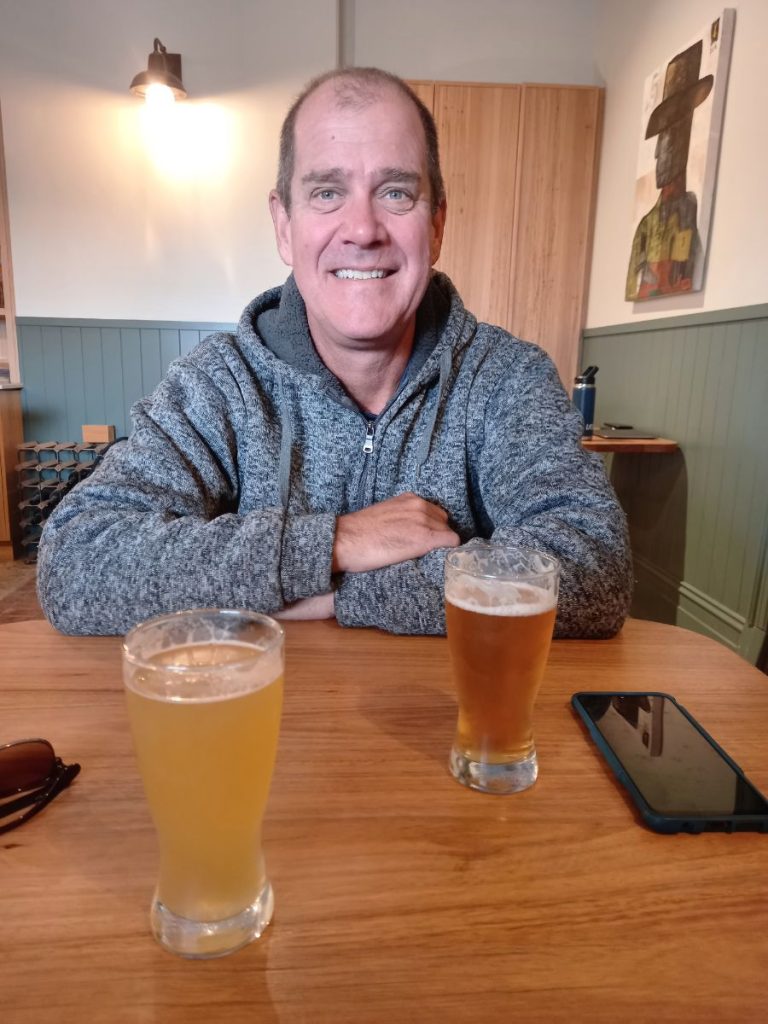
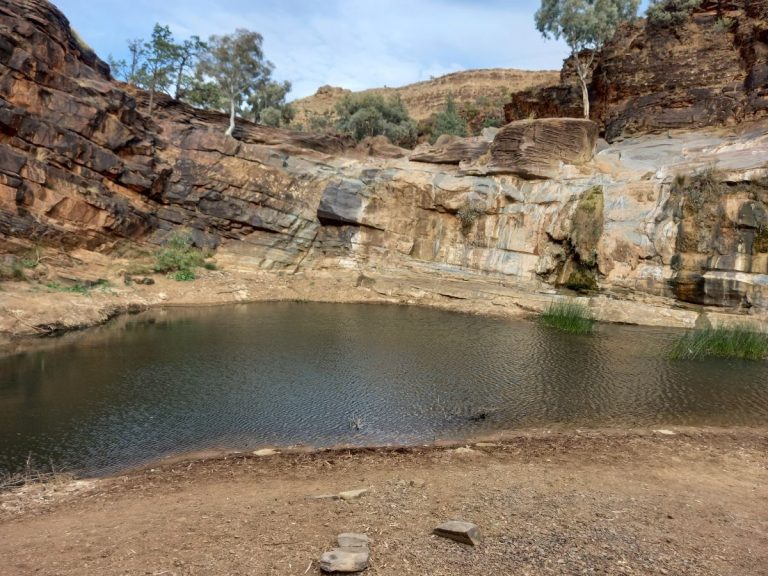
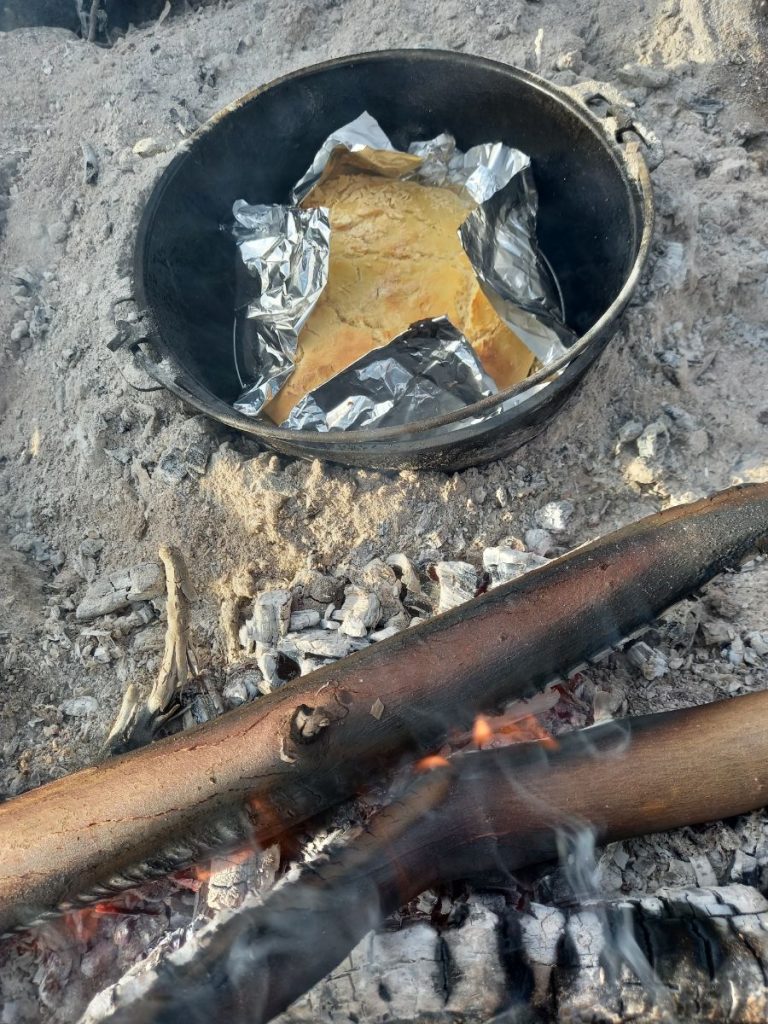
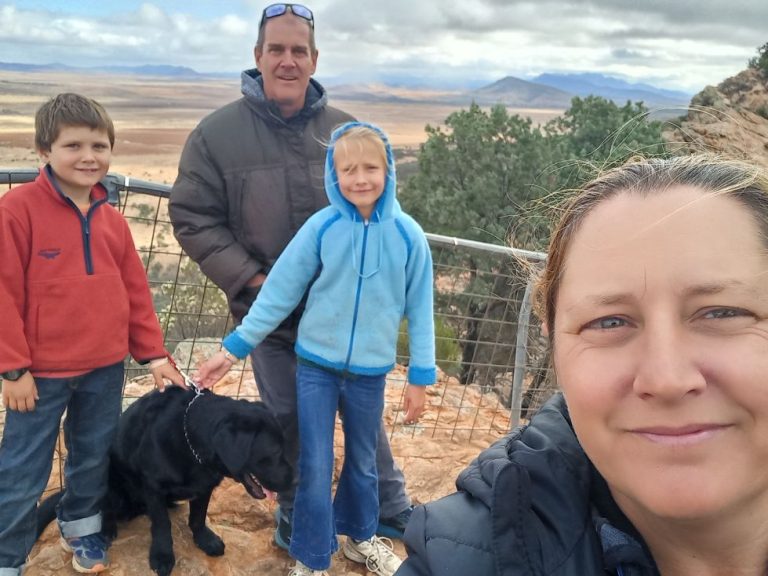
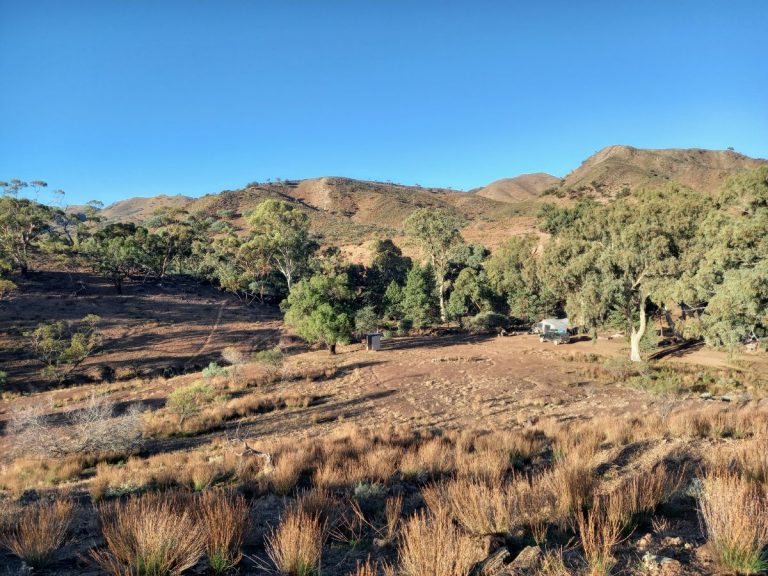
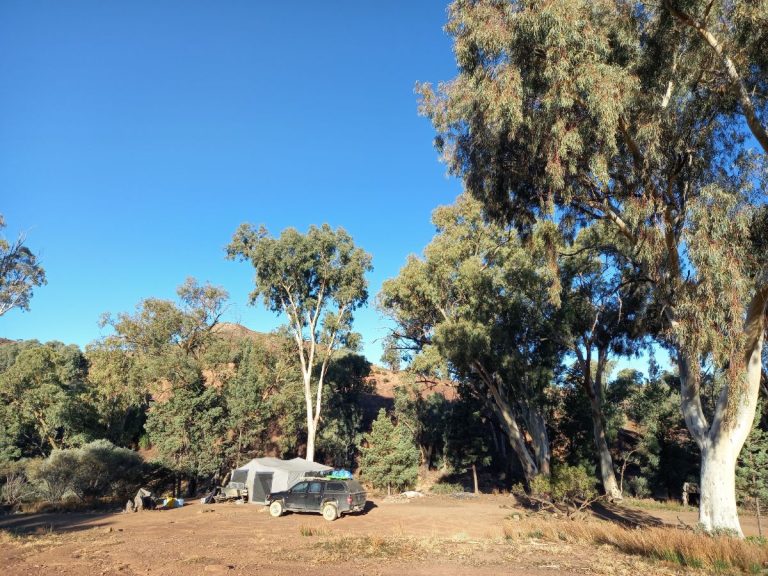
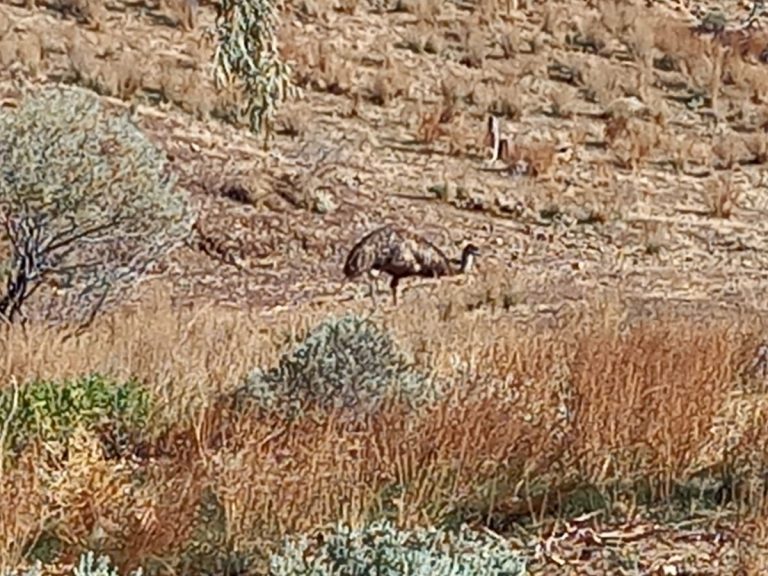
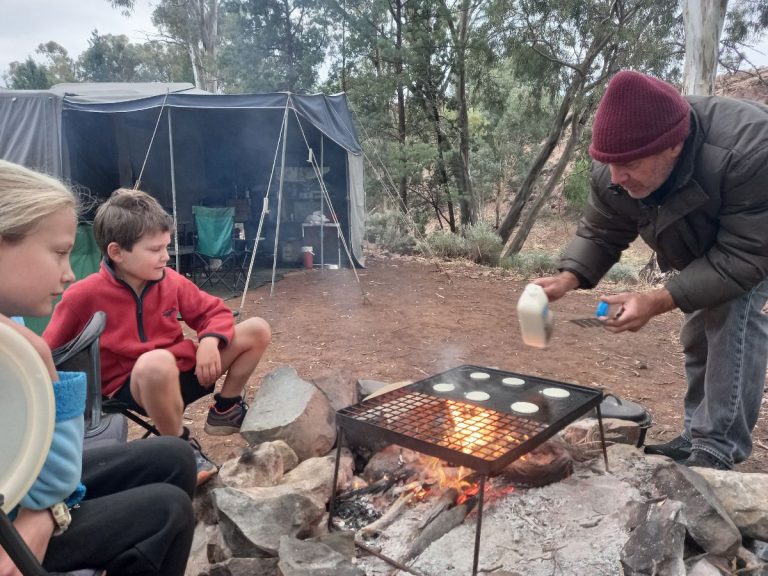
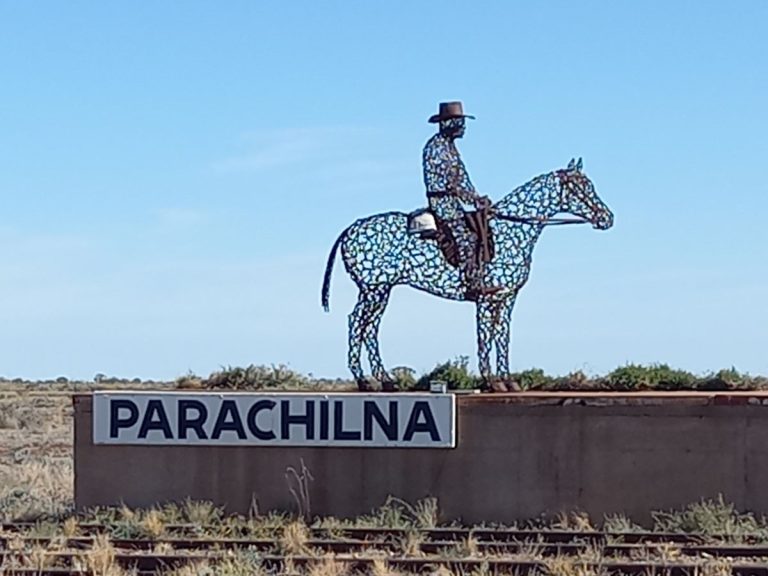
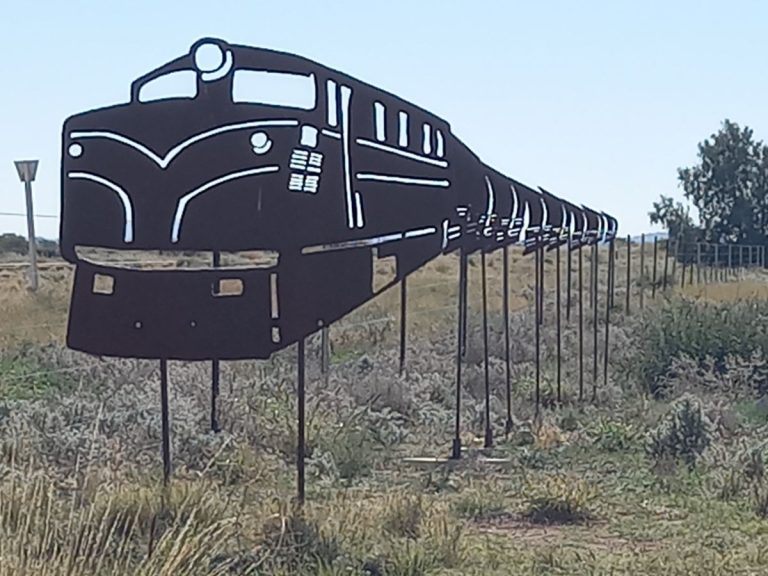
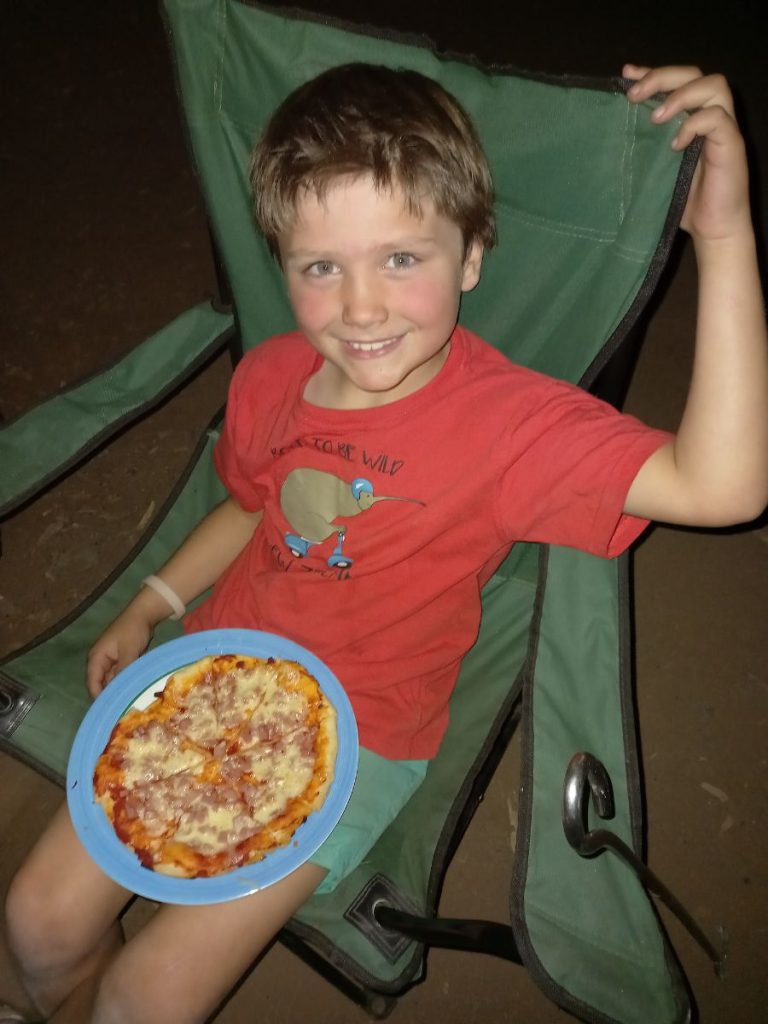
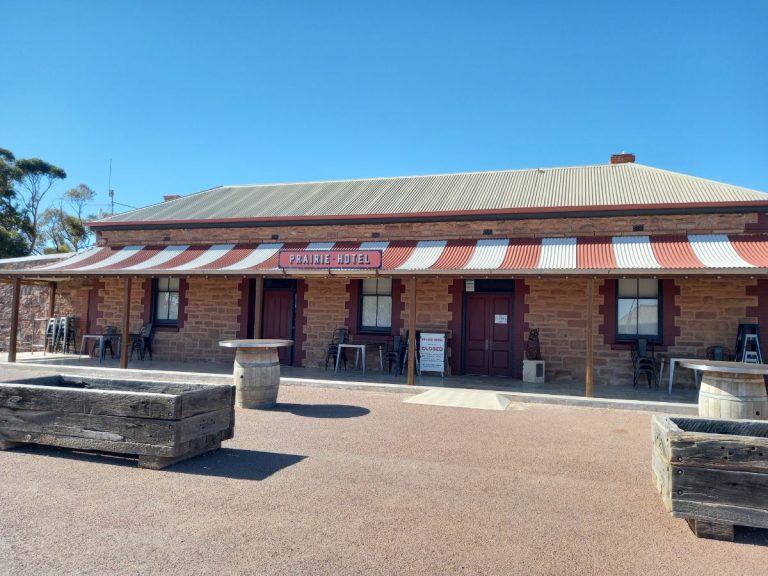
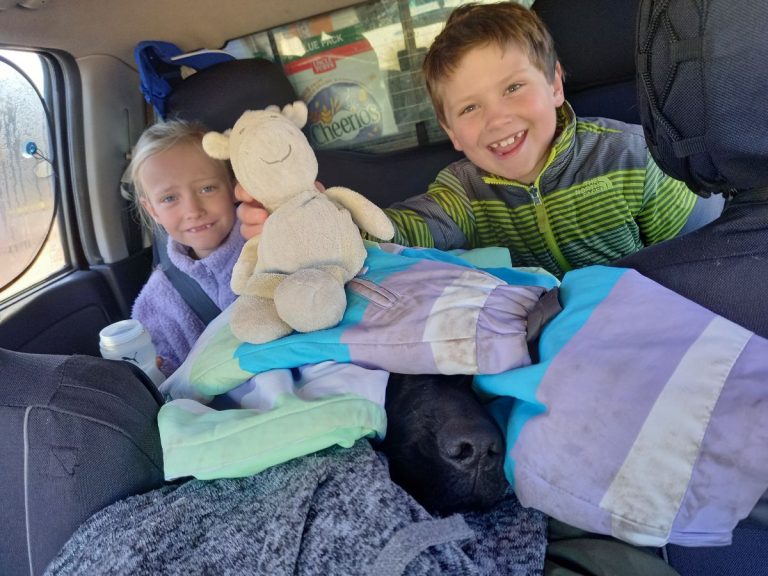
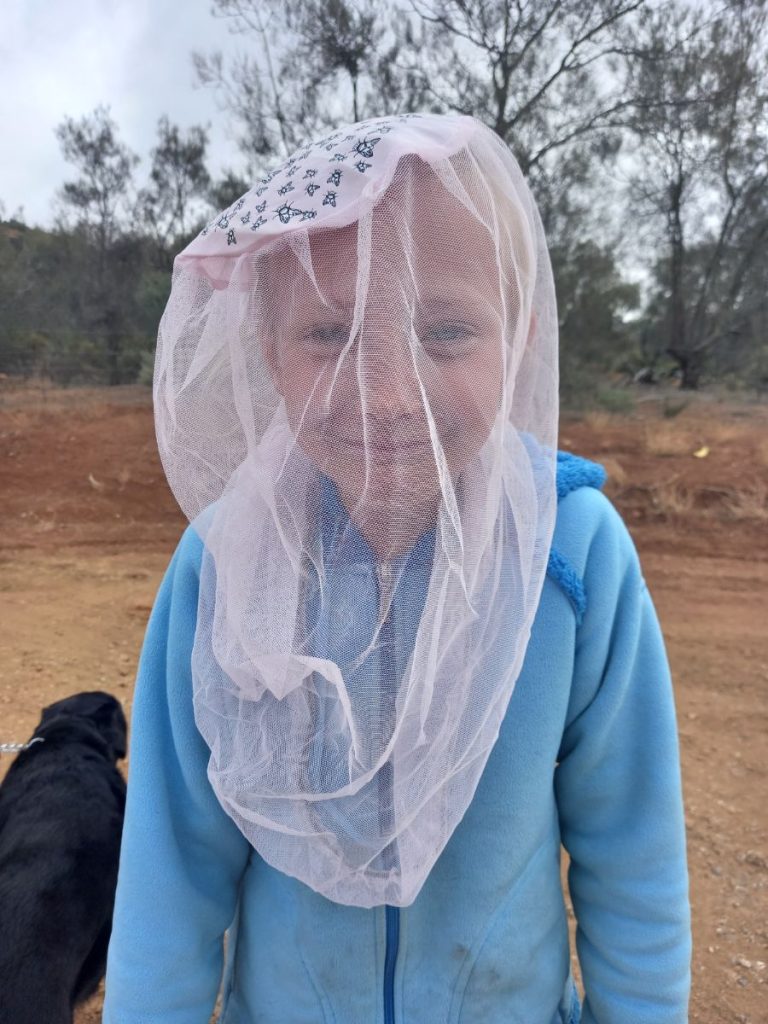
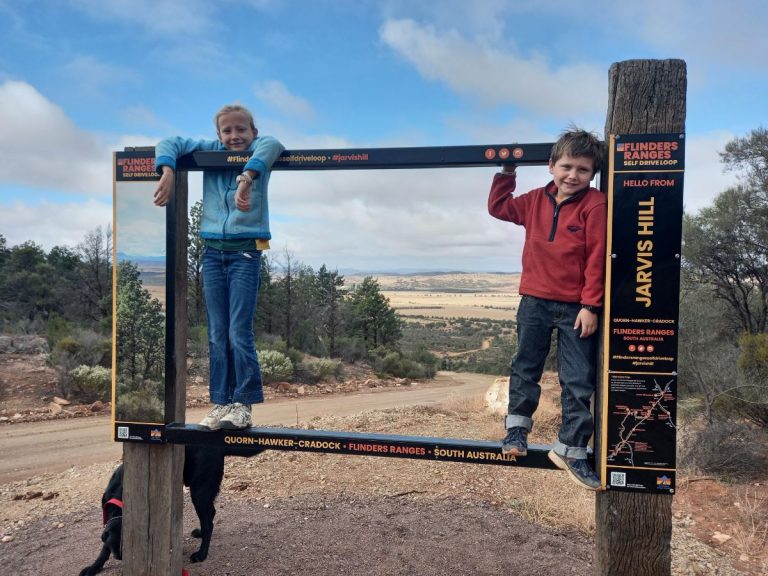
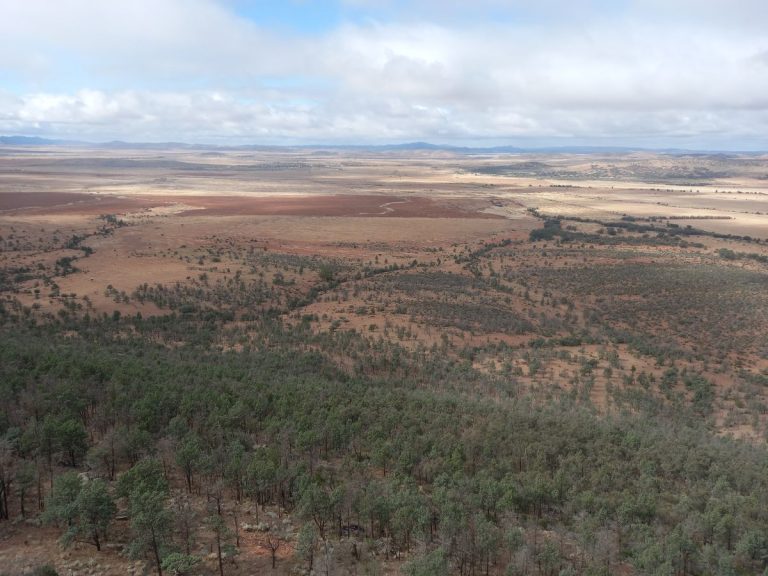
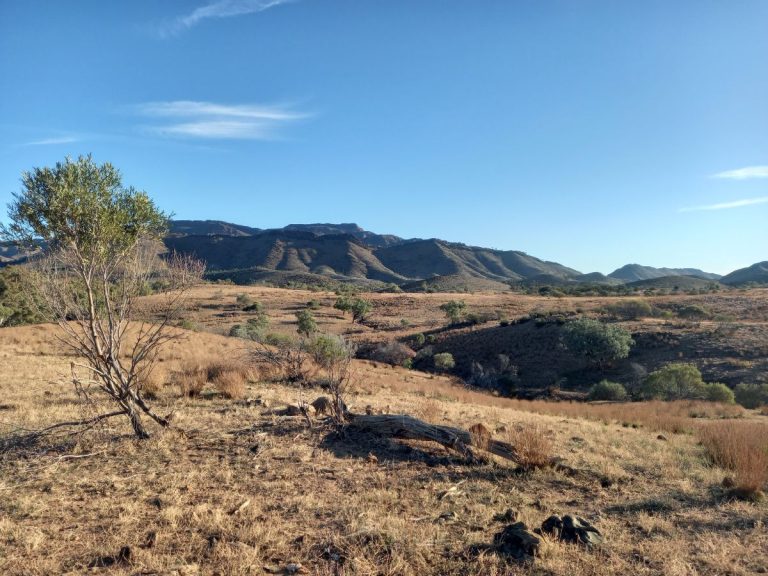
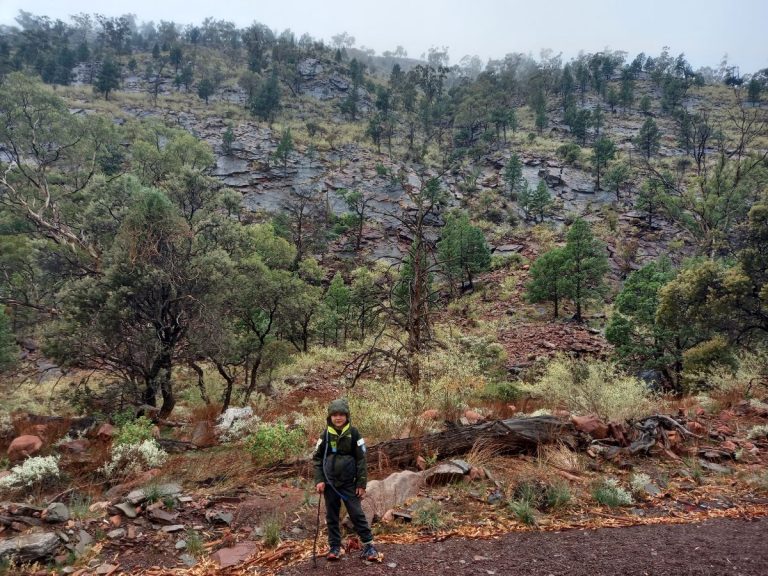
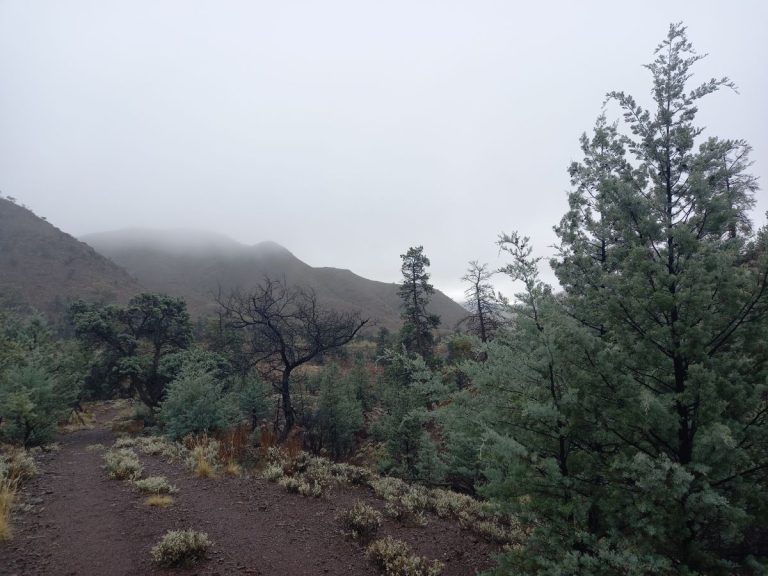
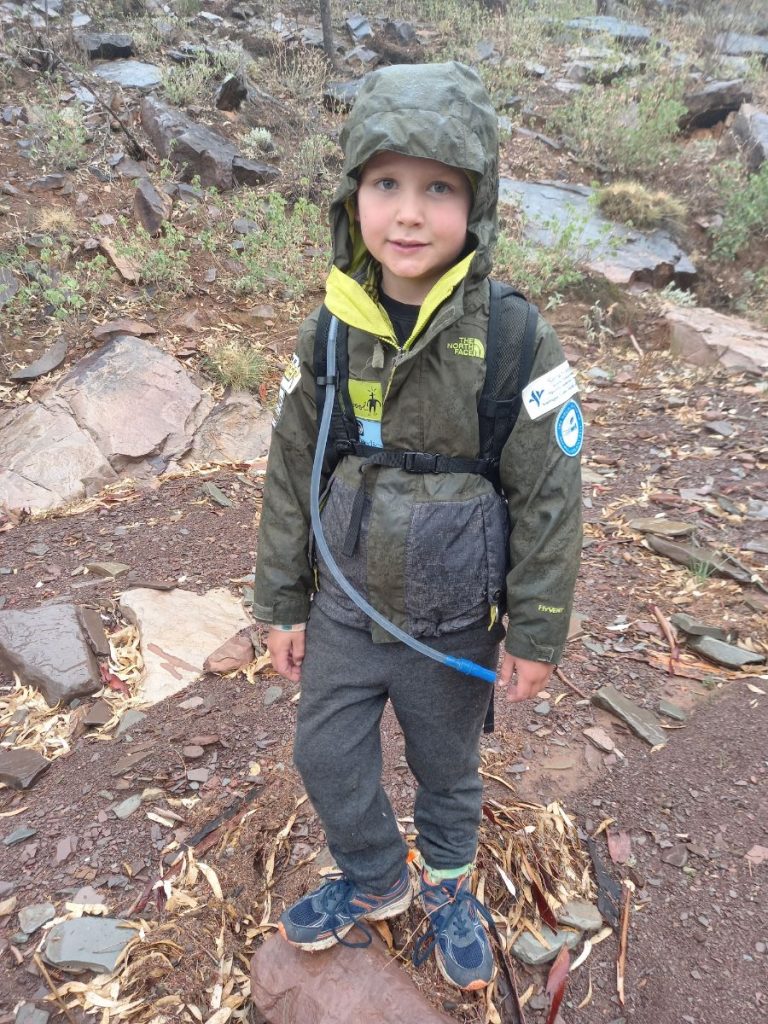
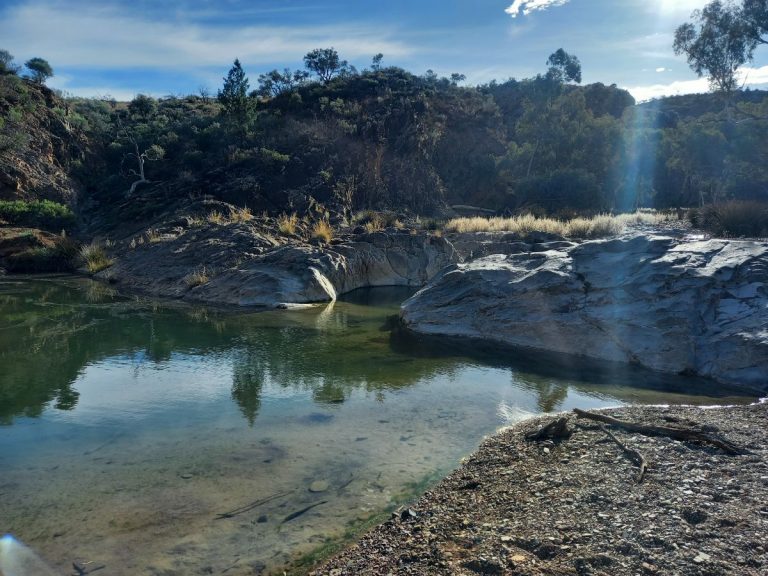
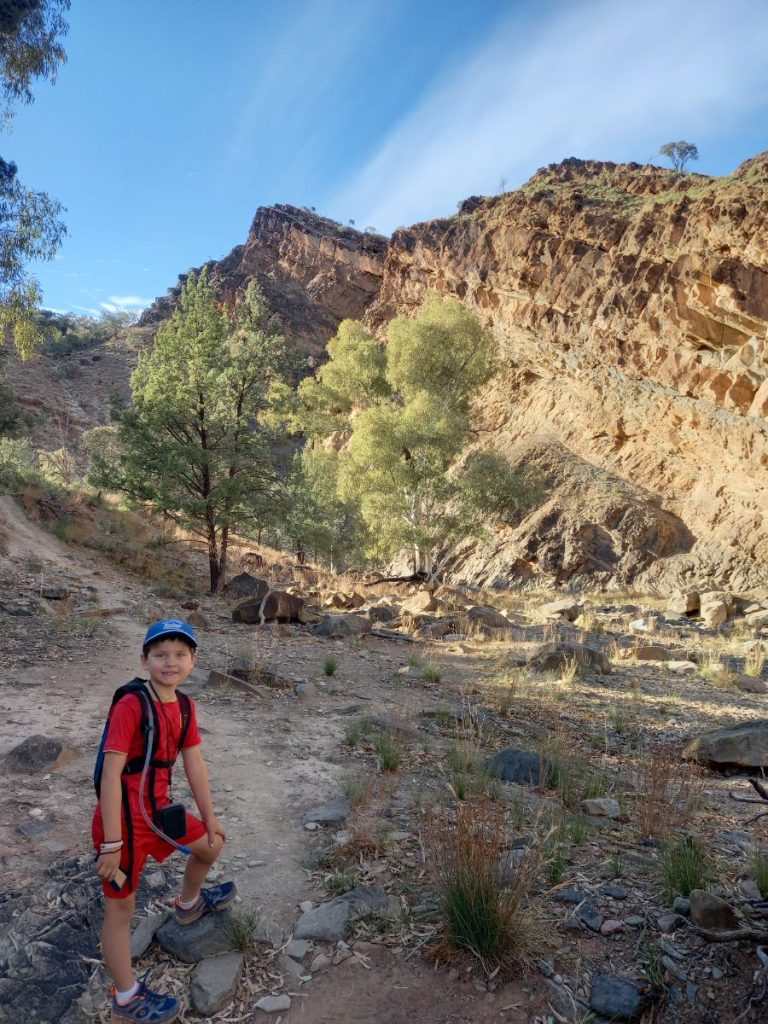
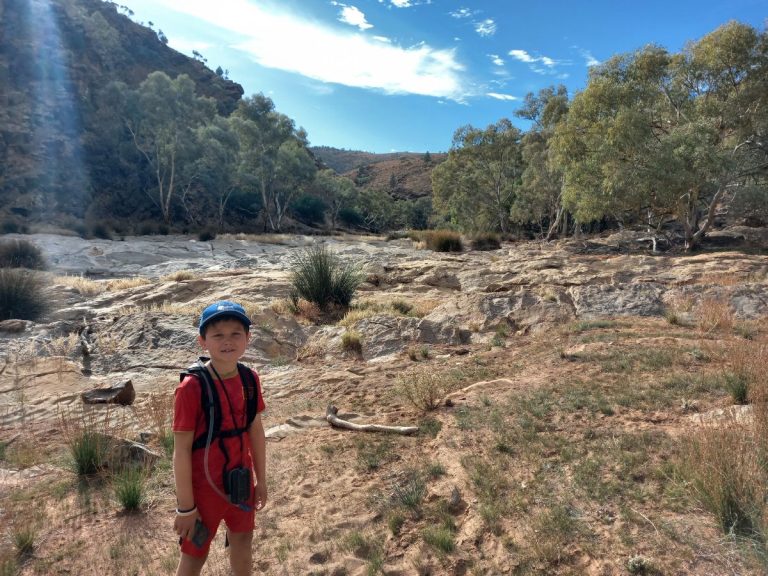
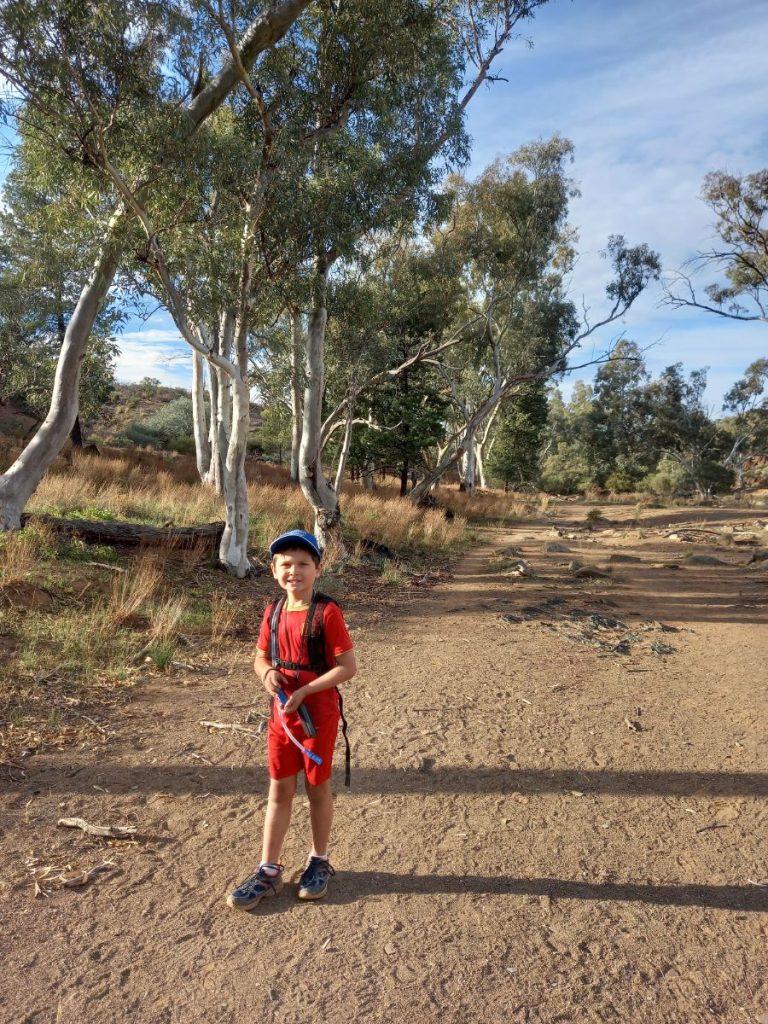


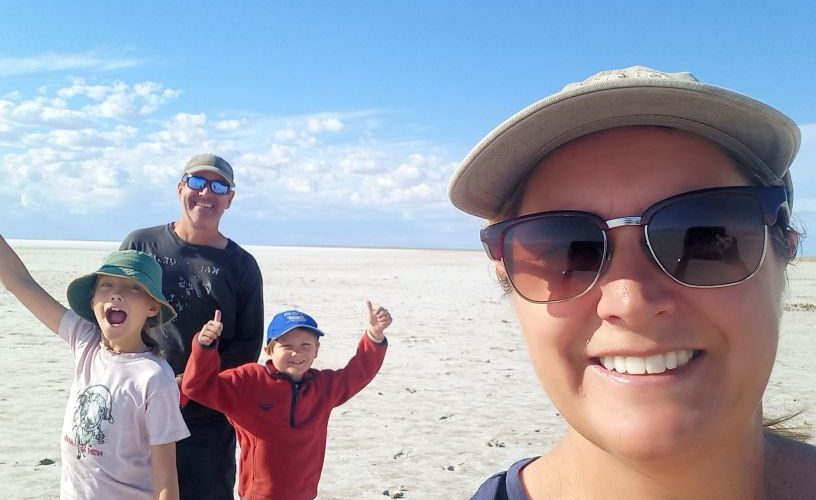
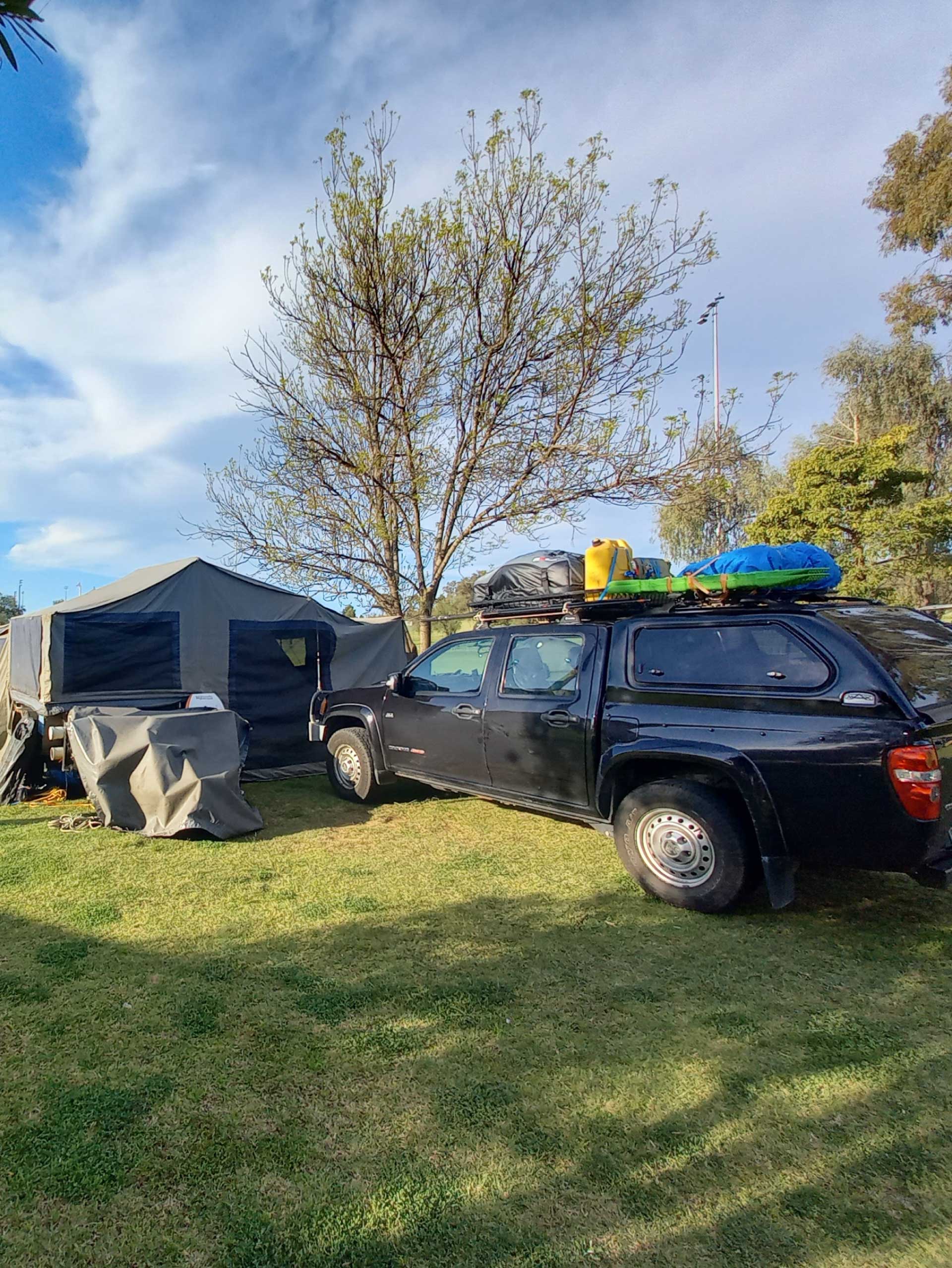
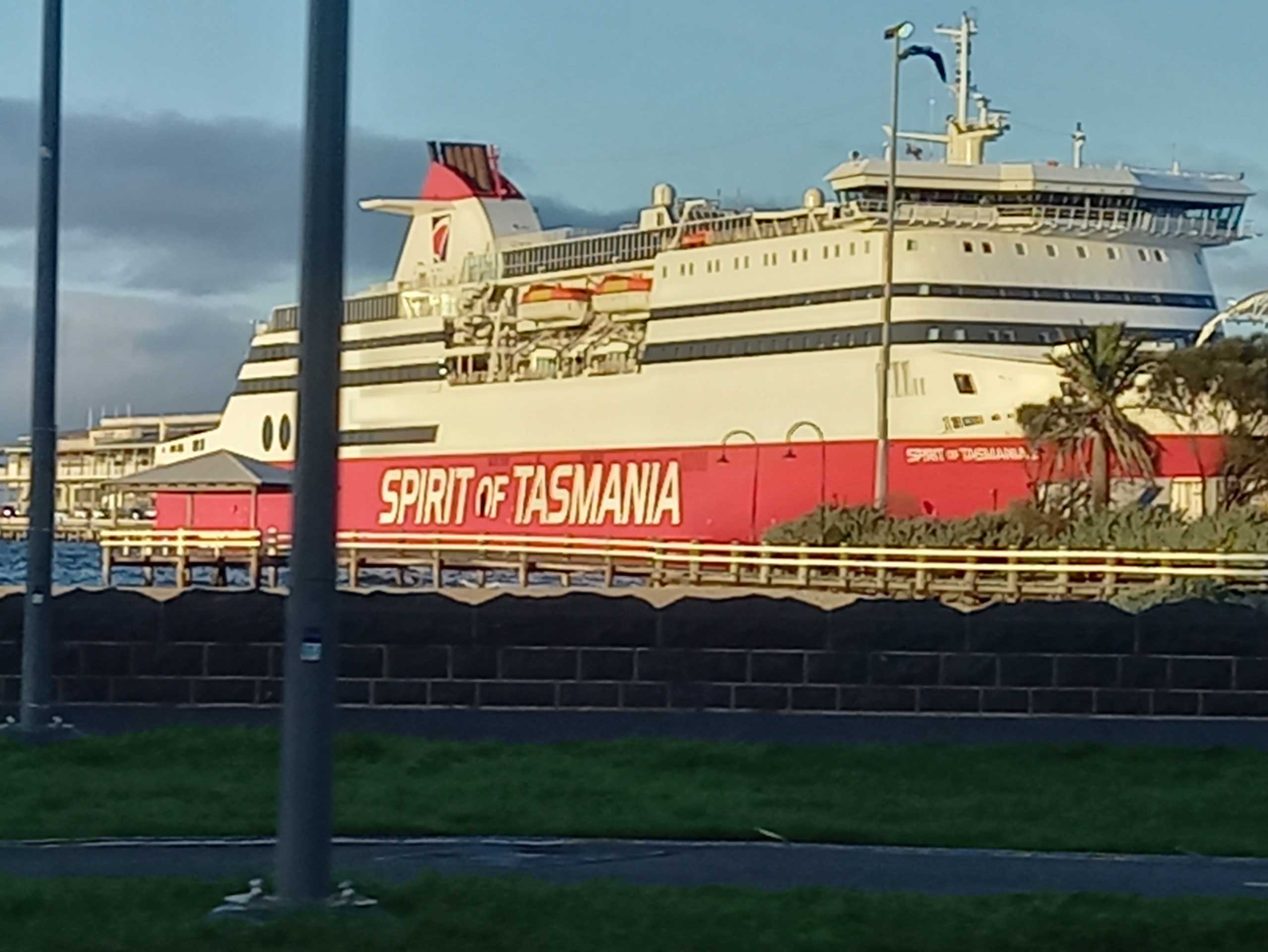

1 Comment
We won’t be inviting you over to NZ any time soon as we’ve had more rain in these last few months than we know what to do with, and we don’t want you spoiling any hope of us drying out!
Your luck has to change soon, surely???